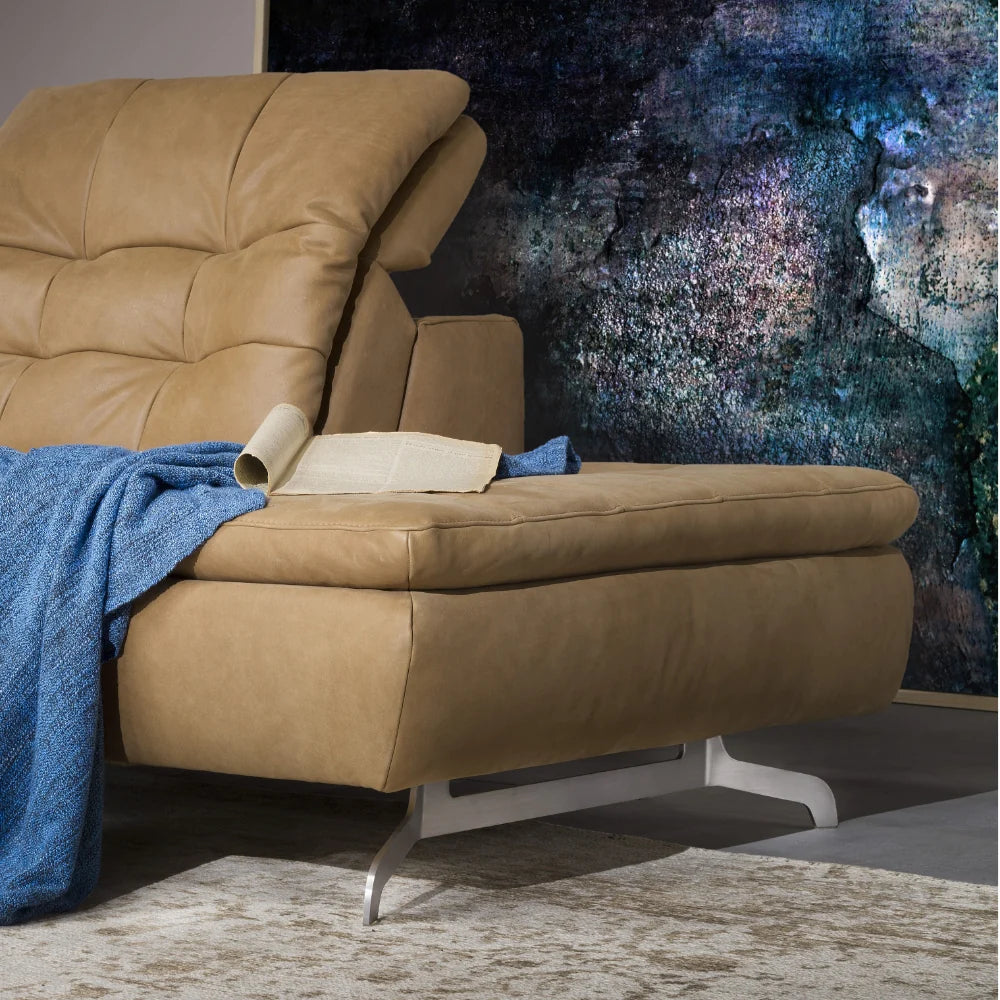In the realm of fine craftsmanship, the debate surrounding Italian leather versus American leather has ignited discussions among connoisseurs and enthusiasts alike. The intricate artistry embedded in both traditions has given rise to an ongoing dialogue: Is Italian leather truly superior to its American counterpart? This exploration delves into the nuanced characteristics, historical legacies, and craftsmanship techniques that distinguish these two iconic leather traditions.
As we navigate the labyrinth of textures, finishes, and cultural influences, the age-old question persists—Is Italian leather better than US leather, or do the unique qualities of each tell a more nuanced story? Let's embark on a journey through the world of premium leather, where the tactile allure meets the cultural tapestry of craftsmanship.
The Truth About American Leather
Heritage And Tradition
Heritage And Tradition
The leathercraft legacy in the United States boasts a history dating back centuries, with skilled artisans passing down their meticulous techniques from generation to generation. American leather reflects a deep-rooted commitment to preserving its heritage, evident in the meticulous handcrafting of products that stand the test of time. The longevity and authenticity embedded in American leather serve as a testament to the enduring traditions that have shaped its evolution.
Quality Standards
The industry adheres to stringent quality control measures, ensuring that each piece meets exacting standards of durability, texture, and finish. From the selection of premium hides to the final stages of production, meticulous attention to detail permeates every step. This commitment to quality contributes to the reputation of American leather as a benchmark of excellence, offering products that not only exude luxury but also withstand the rigors of time.

Sustainability Practices
Tanneries across the country are adopting eco-friendly processes, employing vegetable tanning methods that minimize environmental impact. The integration of sustainable practices underscores a commitment to balancing craftsmanship with environmental stewardship. American leather, thus, emerges as a conscientious choice for those seeking products that harmonize with a contemporary ethos of sustainability.
Diverse Styles And Uses
From the rugged aesthetics of Western-inspired designs to the sleek sophistication of urban chic, American leather adapts to a myriad of styles. Its versatility extends beyond fashion, finding application in upholstery, accessories, and more. This diversity not only reflects the adaptability of American leather to various aesthetic preferences but also its intrinsic capacity to complement an array of lifestyles and purposes.
Italian Leather Vs American Leather
Origin And Authenticity
Embarking on a discerning exploration of Italian leather vs American leather reveals a compelling saga rooted in origin and authenticity. Italian leather, a beacon of centuries-old craftsmanship, weaves a tale of Old World charm and artisanal finesse. In contrast, American leather, steeped in its own rich legacy, exudes authenticity forged through generations. The distinct origins of these leather traditions lay the foundation for the unparalleled authenticity that defines each, setting the stage for a nuanced comparison between Italian and American leather.

Tanning Process
Italian leather, often celebrated for its traditional vegetable tanning methods, imparts a unique patina over time. This meticulous approach not only preserves the natural characteristics of the leather but also contributes to its renowned suppleness and depth of color. Conversely, American leather employs a diverse range of tanning processes, including chrome tanning, allowing for a broader spectrum of finishes. The result is an array of textures and appearances that cater to varied tastes, showcasing the versatility inherent in American leather craftsmanship.
Texture And Aesthetic Appeal
Italian leather, with its emphasis on craftsmanship and attention to detail, is renowned for its luxurious feel and refined textures. The modern Italian leather sofa, a contemporary icon of style and comfort, exemplifies this commitment to aesthetic excellence. Its sleek lines, sumptuous surfaces, and impeccable finishes epitomize the marriage of traditional craftsmanship and modern design sensibilities. In contrast, American leather, while equally revered for its aesthetic diversity, tends to showcase a more rugged versatility. From classic heritage pieces to cutting-edge designs, American leather products reflect an aesthetic spectrum that aligns with the dynamic preferences of a diverse consumer base.

Durability And Longevity
Italian leather, often associated with meticulous craftsmanship, not only withstands the test of time but also develops a distinguished patina, enhancing its character over the years. This characteristic aging process contributes to the enduring appeal of Italian leather products, positioning them as timeless investments. On the other hand, American leather, celebrated for its robust versatility, thrives in various applications, from hard-wearing outdoor gear to sophisticated accessories. The durability of both traditions is a testament to the commitment to quality ingrained in Italian and American leather craftsmanship.
Global Demand
The global demand for Italian and American leather attests to their universal allure. Whether one gravitates towards the classic elegance of Italian leather or the diverse adaptability of American leather, the choice is a testament to personal taste and lifestyle preferences. The modern Italian leather sofa, as a symbol of contemporary luxury, captures the essence of Italian craftsmanship, while American leather products, with their varied styles and applications, resonate with a global audience. The ongoing conversation surrounding Italian vs American leather is a testament to the enduring relevance and distinct contributions of these two iconic traditions to the world of leather craftsmanship.
Is Italian Leather Better Than American Leather
The quality of Italian leather versus American leather depends on various factors, including the specific type of leather, craftsmanship, and intended use. Generally, Italian leather is renowned for its superior quality and meticulous tanning processes. Italian artisans often employ traditional methods, resulting in a softer, more supple texture and a luxurious finish. Additionally, Italy has a rich history in leather craftsmanship, contributing to its reputation for producing high-quality leather goods.
However, American leather also has its merits, with some regions and manufacturers maintaining high standards in tanning and production. American leather is often characterized by its durability and resilience, making it suitable for certain applications.
Ultimately, whether Italian or American leather is better depends on personal preferences, intended use, and the specific product in question. Both countries have a heritage of producing exceptional leather, and individual choices may vary based on factors such as style, functionality, and budget.
Conclusion
The debate between Italian leather vs American leather persists, each offering unique attributes. Italian leather, celebrated for its meticulous craftsmanship and supple texture, stands out for luxury items. On the other hand, American leather, known for durability, finds its niche in various applications.
The ongoing discourse echoes in other comparisons like Italian leather vs German leather, each embodying distinct qualities. Moreover, the perennial discussion extends to materials like Nappa leather vs Italian leather, emphasizing the nuanced choices in the world of high-quality hides. Ultimately, the preference rests on individual taste, purpose, and appreciation for the subtle differences.





